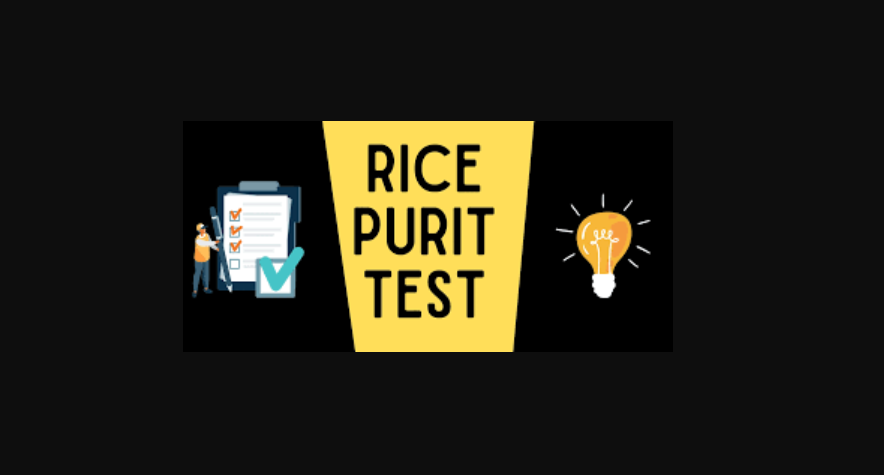The Importance of Purity Testing

Purity is a crucial aspect in various fields, ranging from pharmaceuticals, chemicals, food, and beverages to industrial processes. The presence of impurities can significantly impact the quality, safety, and efficacy of products, leading to potential health hazards, reduced efficiency, or compromised end-results. Testing for purity, therefore, plays a vital role in maintaining the integrity and reliability of products and processes. This article delves into the different testing methods used to ensure purity, their principles, advantages, and limitations.
- Overview of Purity Testing
Purity testing is a process that aims to determine the percentage or concentration of a substance in a sample. The focus is on identifying any impurities present and assessing their levels. Several factors influence the choice of testing methods, including the type of substance being tested, its intended use, and regulatory requirements.
- Classical Chemical Methods
Classical chemical methods have been employed for centuries to test for purity in various substances. These methods involve chemical reactions and transformations to identify and quantify impurities. Some well-known techniques include:
a. Titration: This method involves adding a reagent of known concentration to the sample until a specific reaction occurs, indicating the endpoint of the titration. The amount of reagent used can then be used to calculate the purity of the substance.
b. Gravimetric Analysis: This method relies on the accurate measurement of mass changes due to precipitation or volatilization reactions to determine the purity of the substance.
c. Chromatography: Techniques like paper chromatography, thin-layer chromatography (TLC), and column chromatography are used to separate components of a mixture based on their different affinities to the stationary and mobile phases. The relative positions of spots or bands on the chromatogram reveal the presence of impurities.
While these classical methods have provided valuable insights into purity, they often lack sensitivity and specificity, making them less suitable for detecting trace impurities.
- Modern Analytical Techniques
Advancements in technology have given rise to a plethora of modern analytical techniques that offer enhanced sensitivity and specificity Test for purity:
a. High-Performance Liquid Chromatography (HPLC): HPLC is widely used in pharmaceutical and chemical industries for its ability to separate, identify, and quantify individual components in a mixture. It uses high-pressure pumps to force the sample through a column, where separation occurs based on differences in interaction with the stationary phase.
b. Gas Chromatography (GC): GC is mainly employed for volatile and semi-volatile compounds. The sample is vaporized and injected into a chromatograph, where it is carried through a column by an inert gas. The separation occurs based on differences in volatility and interaction with the stationary phase.
c. Mass Spectrometry (MS): Often coupled with HPLC or GC, MS enables the identification of individual components based on their mass-to-charge ratios. It is incredibly sensitive and capable of identifying trace-level impurities.
d. Nuclear Magnetic Resonance (NMR) Spectroscopy: NMR provides detailed information about the molecular structure of a compound, enabling the identification of impurities and their structural features.
e. Fourier Transform Infrared Spectroscopy (FTIR): FTIR measures the absorption of infrared light by molecules, producing a unique fingerprint for each compound. It is valuable for identifying functional groups and impurities.
- Spectroscopic Methods
Spectroscopic methods encompass various techniques, such as ultraviolet-visible (UV-Vis) spectroscopy and fluorescence spectroscopy. These methods analyze the interactions of substances with light to identify impurities based on their characteristic absorption or emission spectra.
- Microscopy and Imaging Techniques
Microscopy and imaging techniques, such as electron microscopy and atomic force microscopy (AFM), allow for the visualization of particles and structures at the nanoscale. They can be used to detect impurities in solid samples, particularly in the field of nanotechnology.
- Elemental Analysis Techniques
Elemental analysis methods, including atomic absorption spectroscopy (AAS), inductively coupled plasma optical emission spectroscopy (ICP-OES), and inductively coupled plasma mass spectrometry (ICP-MS), are used to quantify the concentration of specific elements in a sample. These methods are vital for detecting elemental impurities in various materials.
Conclusion
Maintaining purity is of paramount importance across diverse industries. The development and implementation of appropriate purity testing methods are essential to ensure product quality, safety, and compliance with regulatory standards. From classical chemical techniques to modern analytical instruments, each method contributes to our ability to identify and quantify impurities accurately and reliably. As technology continues to advance, the field of purity testing will undoubtedly progress, enabling us to uphold the highest standards of quality and integrity in products and processes.
- Art
- Causes
- Crafts
- Dance
- Drinks
- Film
- Fitness
- Food
- Игры
- Gardening
- Health
- Главная
- Literature
- Music
- Networking
- Другое
- Party
- Religion
- Shopping
- Sports
- Theater
- Wellness
- IT, Cloud, Software and Technology


